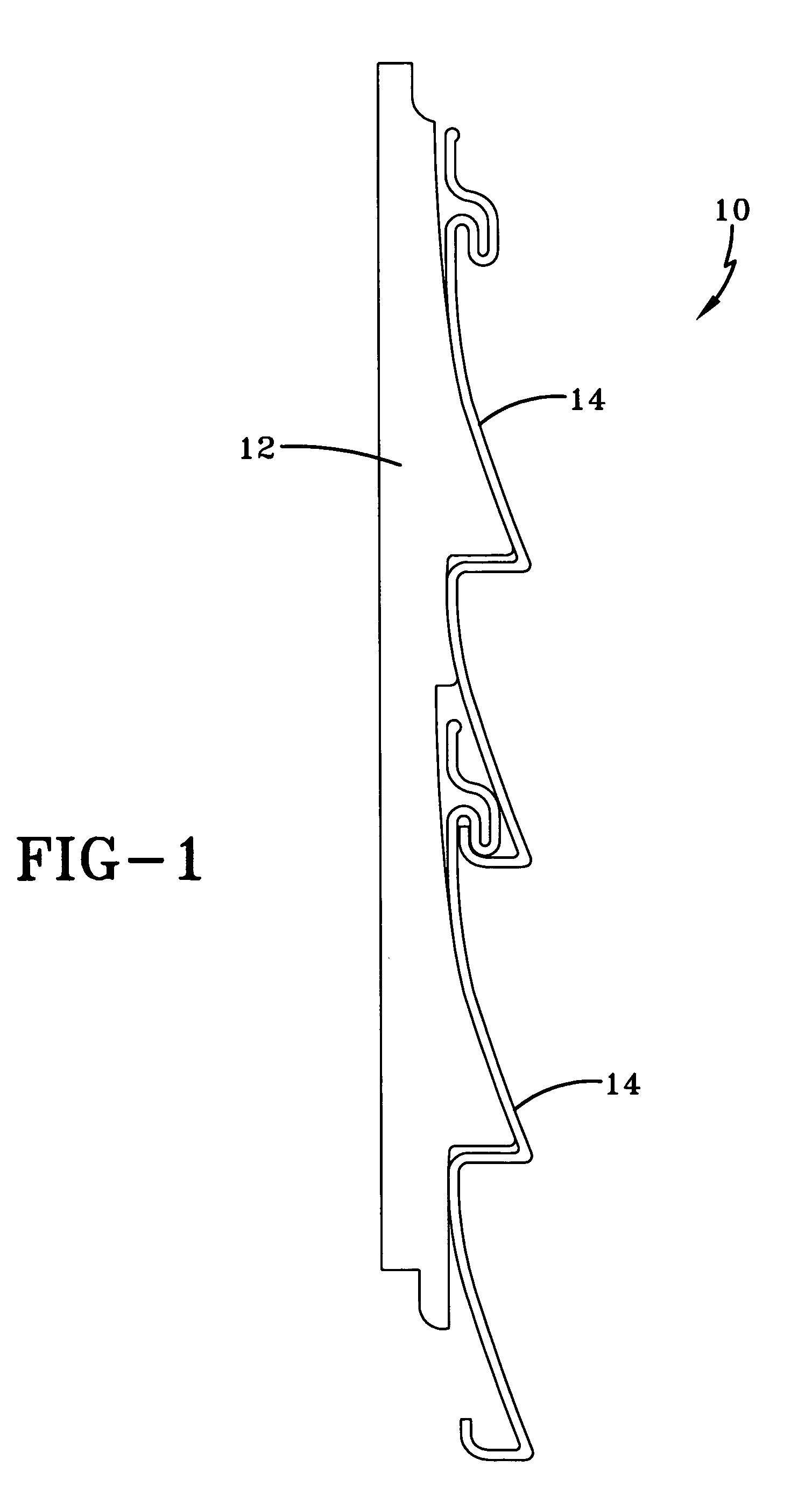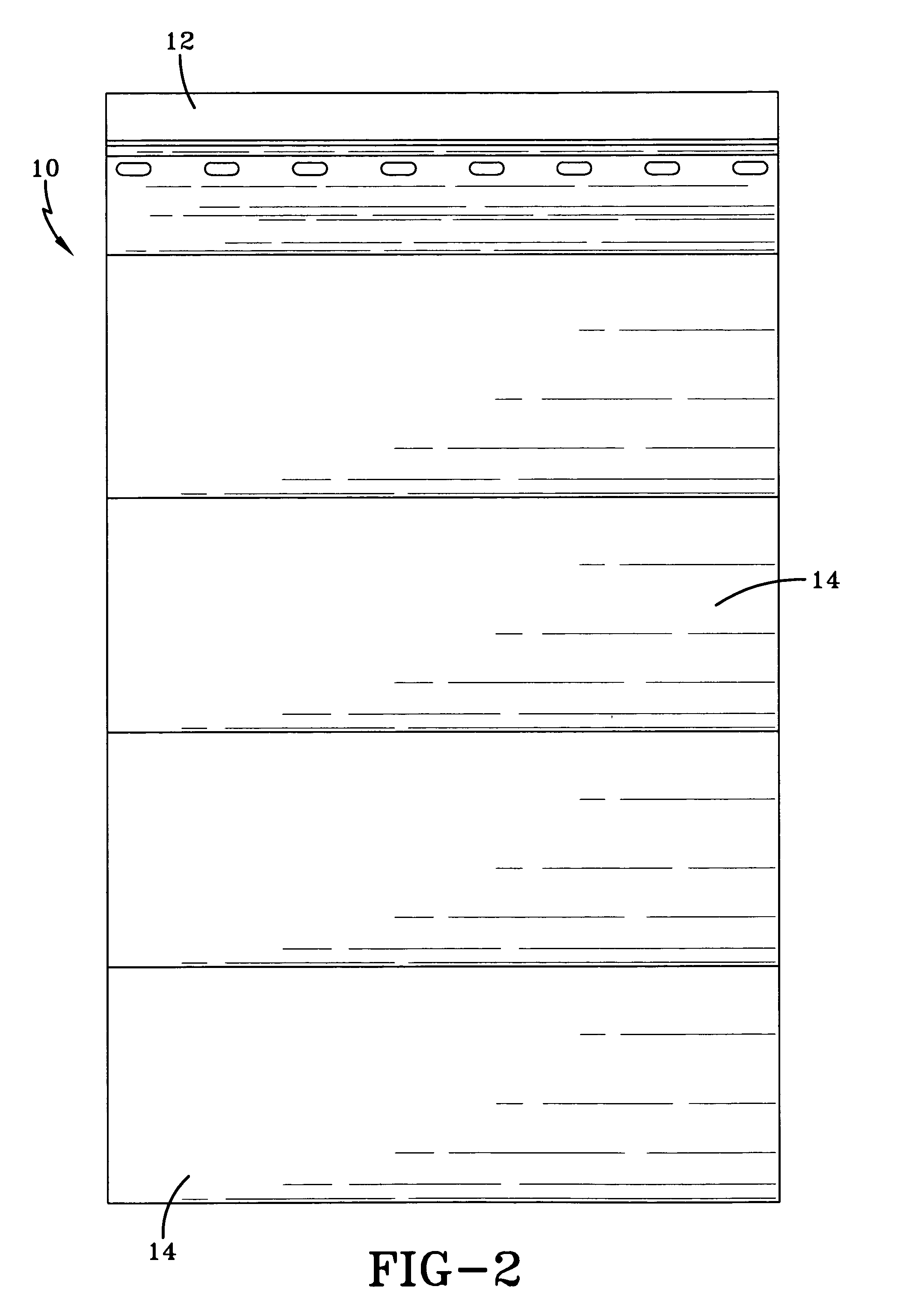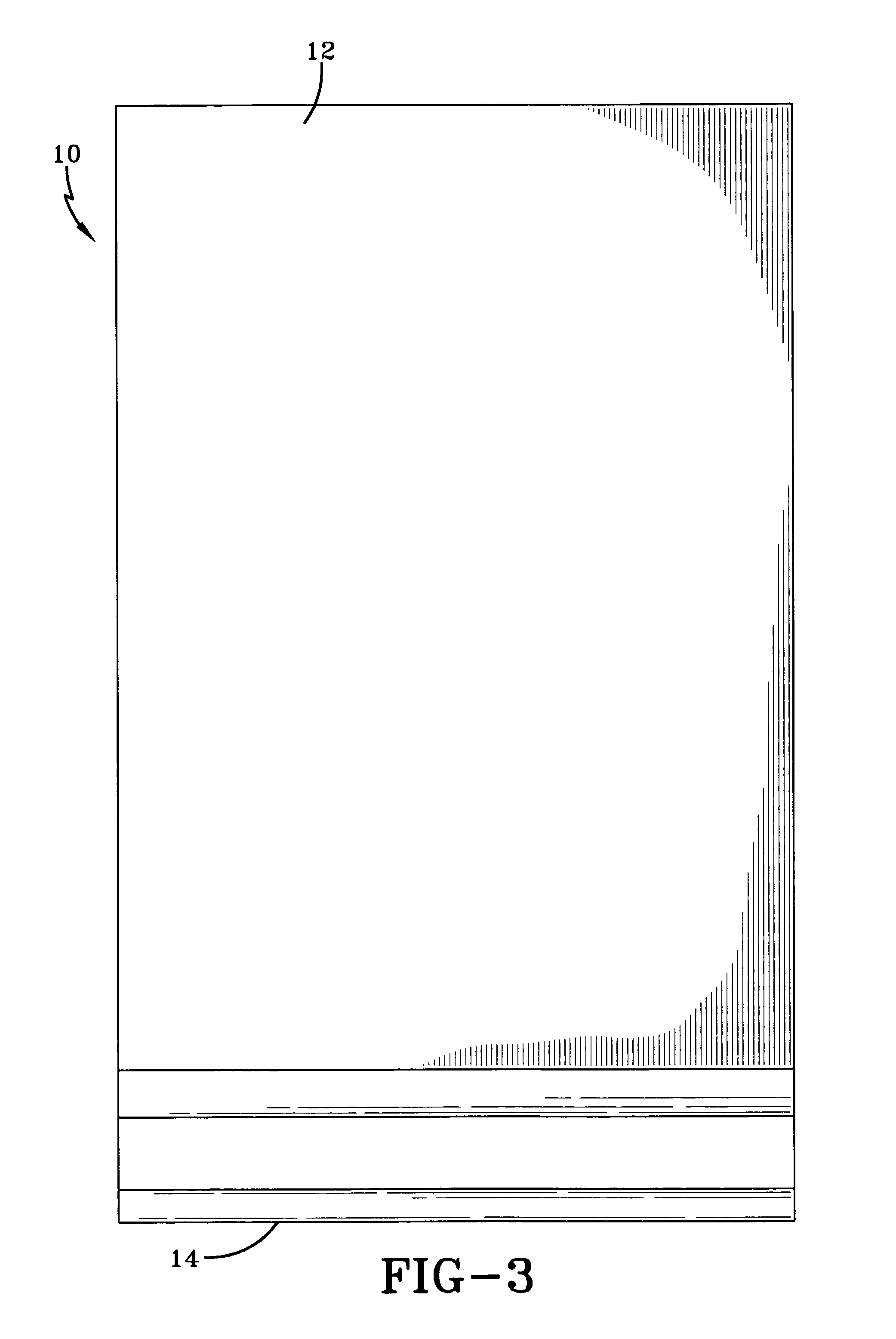Cellulosic/polymer composite material
a composite material and polymer technology, applied in the field of wood replacement materials, can solve the problems of reducing the supply of natural wood for construction and other purposes, increasing the cost of natural wood, and retaining moisture, and achieve the effect of enhancing moisture resistance and superior resistance to wear and tear
- Summary
- Abstract
- Description
- Claims
- Application Information
AI Technical Summary
Benefits of technology
Problems solved by technology
Method used
Image
Examples
examples
[0025]A cellulosic / PVC composite was made which comprised about 111 parts of a cellulosic filler and about 112 parts of a PVC material. The PVC material was comprised of about 100 parts of a PVC resin, about 4 parts stabilizer, about 6 parts lubricants, and about 2 parts process aids. The cellulosic filler and the PVC material were mixed together and extruded. The resultant product exhibited desired appearance, strength, durability, and weatherability.
[0026]A cellulosic / polypropylene composite was also made which comprised about 143 parts of a cellulosic filler and about 136 parts of a polypropylene material. The polypropylene material was comprised of about 100 parts polypropylene resin, about 15 parts lubricants, and about 21 parts of an inorganic filler. The composite was made by first drying the wood flour to about 2% or less moisture content. The polypropylene resin, lubricants, and inorganic filler were then added and blended for about 5 minutes. Next, the composite material w...
PUM
| Property | Measurement | Unit |
|---|---|---|
| Fraction | aaaaa | aaaaa |
| Fraction | aaaaa | aaaaa |
| Fraction | aaaaa | aaaaa |
Abstract
Description
Claims
Application Information
 Login to View More
Login to View More - R&D
- Intellectual Property
- Life Sciences
- Materials
- Tech Scout
- Unparalleled Data Quality
- Higher Quality Content
- 60% Fewer Hallucinations
Browse by: Latest US Patents, China's latest patents, Technical Efficacy Thesaurus, Application Domain, Technology Topic, Popular Technical Reports.
© 2025 PatSnap. All rights reserved.Legal|Privacy policy|Modern Slavery Act Transparency Statement|Sitemap|About US| Contact US: help@patsnap.com



